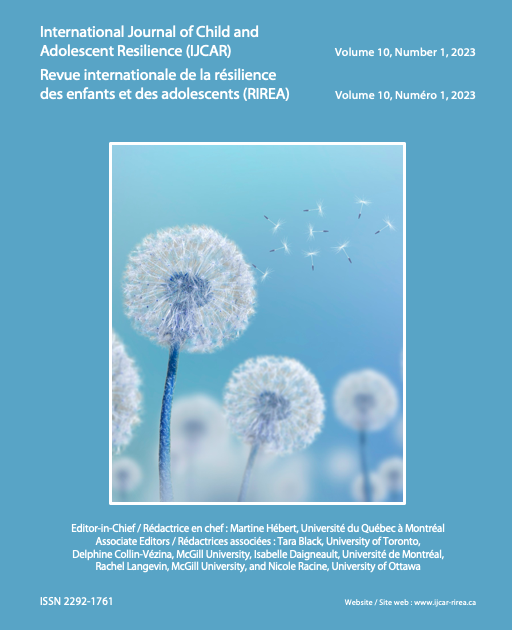Abstract
Objectives: Social media is a common tool for disseminating information in developing countries, including Brazil. Research regarding social media’s effect on increasing awareness of and knowledge about child abuse has yet to be widely tested in those countries. This exploratory study tested whether social media is a viable outlet for disseminating empirically supported information about child abuse in Brazil.
Methods: We utilized social media platforms, such as Facebook, ResearchGate, Twitter (which has subsequently rebranded as X but will be referred to herein as Twitter), Instagram, and YouTube, to disseminate a series of short videos, in cartoon format, on the scientific research surrounding child abuse, adverse childhood events, and resiliency to such experiences.
Results: The results indicate that social media has a promising reach in Brazil, as the dissemination started by 10 researchers had over 30,000 views.
Conclusion and Implications: Social media may be a viable format for disseminating empirically-supported information in developing countries like Brazil. Each platform, however, has its own characteristics and, as such, the target audiences, engagement, delivery, followers, impact time, and other metrics vary across platforms. Additionally, not all social media platforms provide the same outreach internationally. Future directions are discussed.
References
Al-Dmour, H., Salman, A., Abuhashesh, M., & Al-Dmour, R. (2020). Influence of social media platforms on public health protection against the COVID-19 pandemic via the mediating effects of public health awareness and behavioral changes: An integrated model. Journal of Medical Internet Research, 22(8), e19996. https://doi.org/10.2196/19996
Chatmon, B. N. (2020). Males and mental health stigma. American Journal of Men’s Health, 14(4). https://doi.org/10.1177/1557988320949322
IBGE. (2020). Acesso à internet e à televisão e posse de telefone móvel celular para uso pessoal [Internet, tv, and cellphone access for personal use]. Instituto Brasileiro de Geografia e Estatística. https://biblioteca.ibge.gov.br/index.php/biblioteca-catalogo?view=detalhes&id=2101963
Ferrari, I. M. D. S. F., Priolo Filho, S. R., & Brino, R. F. (2016). Questionário sobre violência intrafamiliar: confiabilidade de um instrumento sobre crenças. Psicologia: Teoria e Prática, 18(3), 54-65. http://editorarevistas.mackenzie.br/index.php/ptp/article/view/7863
Kemp, S. (2022, February 9). Digital 2022: Brazil. Datareportal. https://datareportal.com/reports/digital-2022-brazil
Kemshall, H., & Moulden, H. M. (2017). Communicating about child sexual abuse with the public: Learning the lessons from public awareness campaigns. Journal of Sexual Aggression, 23(2), 124-138. https://doi.org/10.1080/13552600.2016.1222004
Kepios. (2022). Digital 2022: Essential Facebook stats for q2 2022 v01. Slideshare. https://www.slideshare.net/DataReportal/digital-2022-essential-facebook-stats-for-q2-2022-v01
Lapointe, L., Ramaprasad, J., & Vedel, I. (2014). Creating health awareness: A social media enabled collaboration. Health and Technology, 4(1), 43-57. https://doi.org/10.1007/s12553-013-0068-1
Leal, A. F., Wanderbroocke, A. C. N. S., & Priolo Filho, S. R. (2022). Intervention with police officers about intimate partner violence. Revista Psicologia: Teoria e Prática, 24(2), ePTPSP14088. https://doi.org/10.5935/1980-6906/ePTPSP14088.en
Lyson, H. C., Le, G. M., Zhang, J., Rivadeneira, N., Lyles, C., Radcliffe, K., Pasick, R. J., Sawaya, G., Sarkar, U., & Centola, D. (2019). Social media as a tool to promote health awareness: Results from an online cervical cancer prevention study. Journal of Cancer Education, 34, 819-822. https://doi.org/10.1007/s13187-018-1379-8
Mushquash, A. R., Pearson, E. S., Waddington, K., MacIsaac, A., Mohammed, S., Grassia, E., Smith, S., & Wekerle, C. (2021). User perspectives on a resilience-building app (JoyPop): Qualitative study. JMIR mHealth and uHealth, 9(7), e28677. https://doi.org/10.2196/28677
Njaine, K., & Minayo, M. C. D. S. (2004). A violência na mídia como tema da área da saúde pública: Revisão da literatura. Ciência & Saúde Coletiva, 9, 201-211. https://doi.org/10.1590/S1413-81232004000100020
Pelisoli, C., Herman, S., & Dell’Aglio, D. D. (2015). Child sexual abuse research knowledge among child abuse professionals and laypersons. Child Abuse & Neglect, 40, 36-47. https://doi.org/10.1016/j.chiabu.2014.08.010
Poreddi, V., Pashapu, D. R., Kathyayani, B. V., Gandhi, S., El-Arousy, W., & Math, S. B. (2016). Nursing students' knowledge of child abuse and neglect in India. British Journal of Nursing, 25(5), 264-268. https://doi.org/10.12968/bjon.2016.25.5.264
Regnaut, O., Jeu-Steenhouwer, M., Manaouil, C., & Gignon, M. (2015). Risk factors for child abuse: Levels of knowledge and difficulties in family medicine. A mixed method study. BMC Research Notes, 8(1), Article 620. https://doi.org/10.1186/s13104-015-1607-9
Saurabh, S., & Gautam, S. (2019). Modeling and statistical analysis of YouTube's educational videos: A channel Owner's perspective. Computers & Education, 128, 145-158. https://doi.org/10.1016/j.compedu.2018.09.003
Saha, K., Torous, J., Ernala, S. K., Rizuto, C., Stafford, A., & De Choudhury, M. (2019). A computational study of mental health awareness campaigns on social media. Translational Behavioral Medicine, 9(6), 1197-1207. https://doi.org/10.1093/tbm/ibz028
von Abrams, K. (2021, October 21). Global media intelligence 2021: Brazil. Insider Intelligence. https://www.insiderintelligence.com/content/global-media-intelligence-2021-brazil
Wekerle, C., Vakili, N., Stewart, S. H., & Black, T. (2018). The utility of Twitter as a tool for increasing reach of research on sexual violence. Child Abuse & Neglect, 85, 220-228. https://doi.org/10.1016/j.chiabu.2018.04.019
